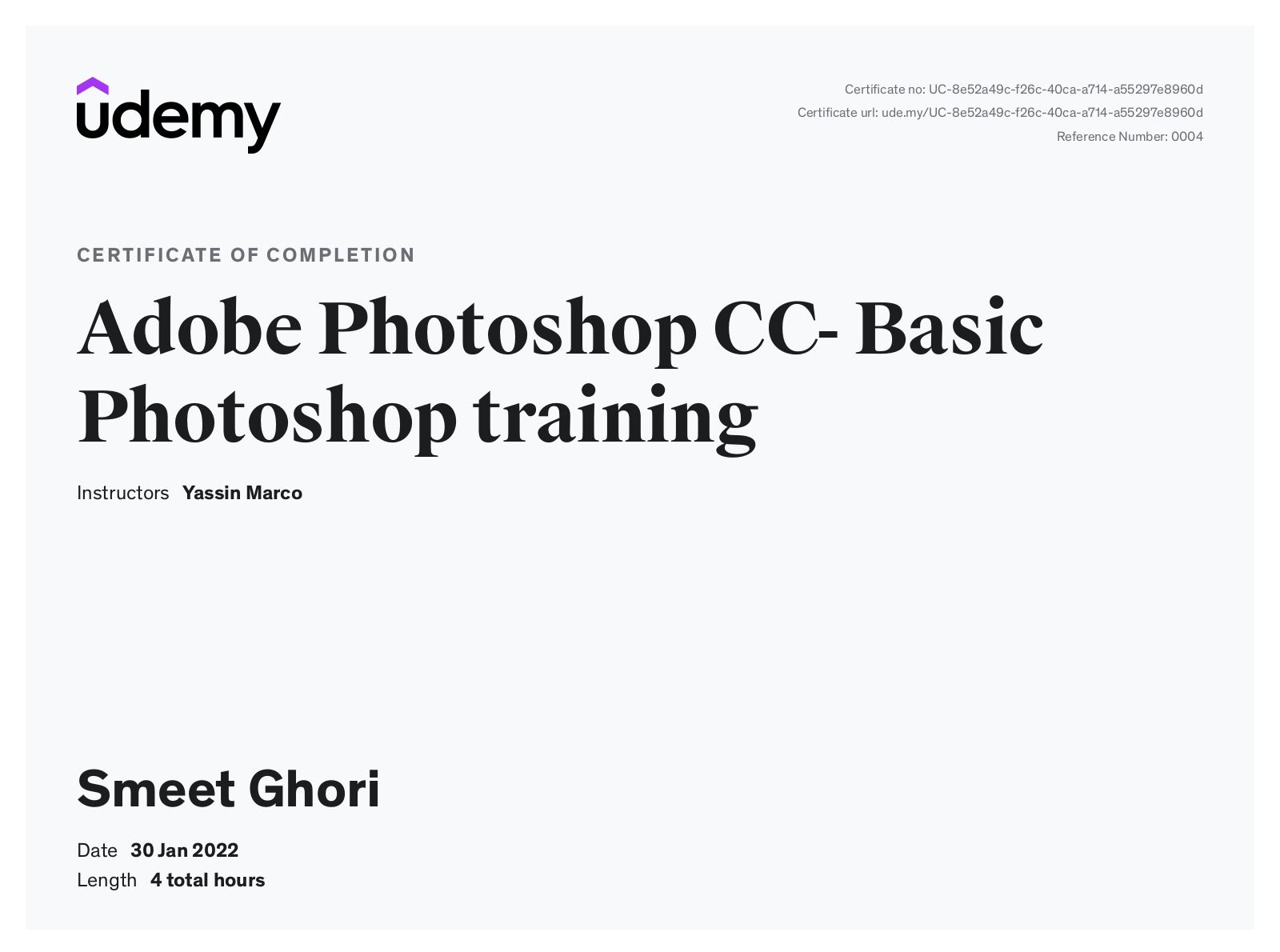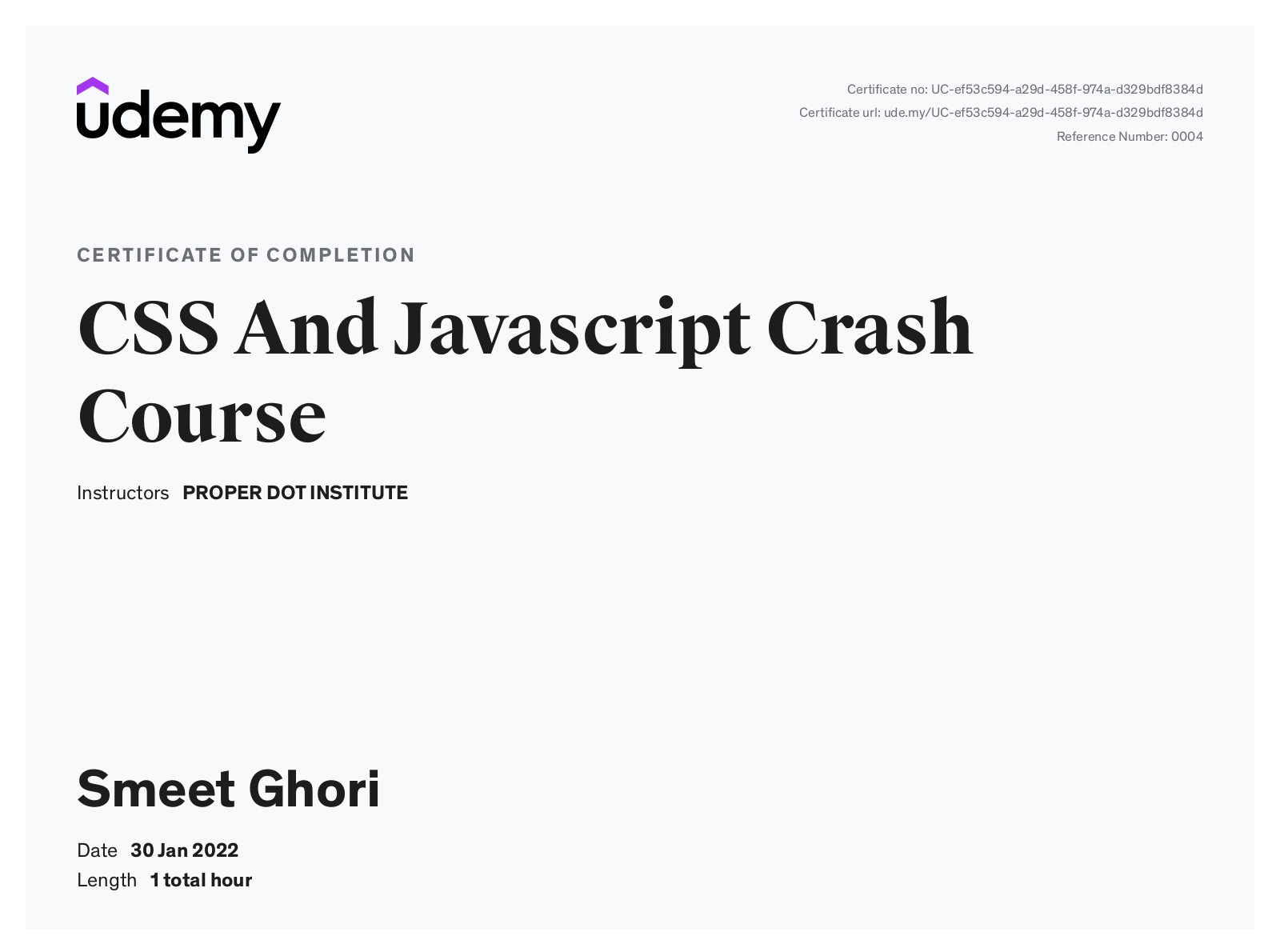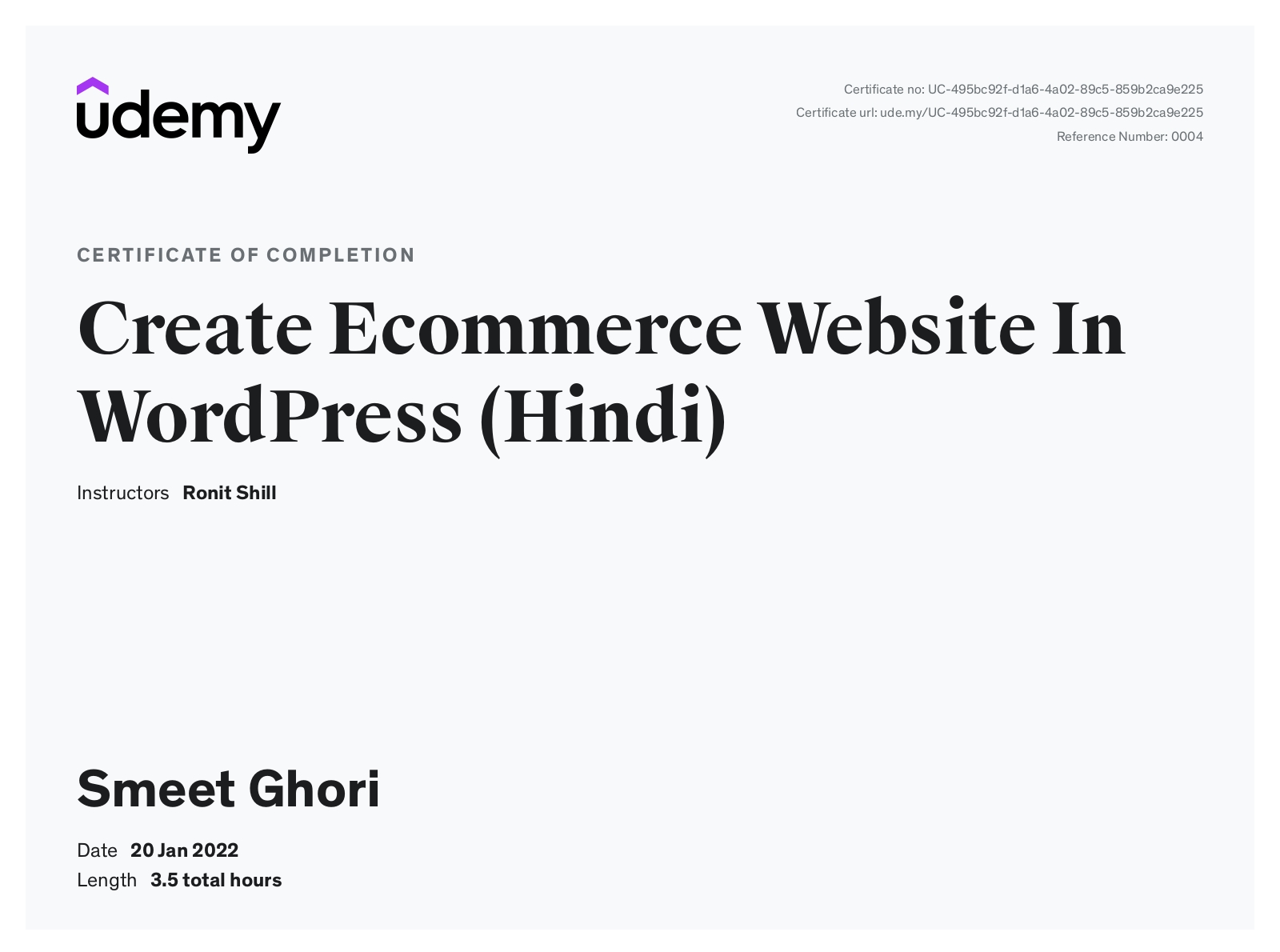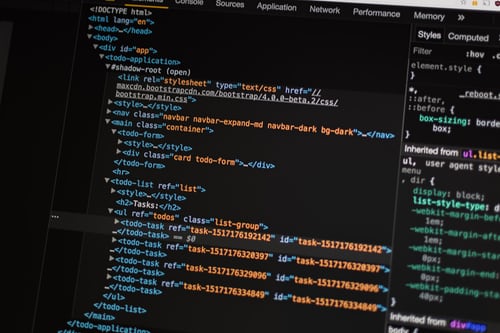Smeet Ghori
Elements
Learn basic elements of websites
Text
This is bold and this is strong. This is
italic and this is emphasized. This is
superscript text and this is
subscript text. This is underlined and this is
code: for (;;) { ... }. Finally,
this is a link.
Blockquote
The web development workshop which covered introductory HTML, CSS, Javascript, and NodeJS served around a third of the attendees and gave students a chance to create a foundation for their web application. Of the seven projects submitted, one was a team of four freshman students excited that they created a simple webpage and applied the new skills that they learned in the workshop.
Preformatted
i = 0;
while (!deck.isInOrder()) {
print 'Iteration ' + i;
deck.shuffle();
i++;
}
print 'It took ' + i + ' iterations to sort the deck.';
//smeet ghoriLists
Unordered
- HTML
- CSS
- JS
- PHP
- Python
- HTML
- CSS
- JS
- PHP
- Python
Alternate
Actions
Pagination
Table
Default
| Name | Description | Price |
|---|---|---|
| 01. | Website design | $460 |
| 02. | Domain regestration | $49 |
| 03. | Logo design | $89 |
| 04. | Hosting Fees | $799 |
| 05. | Server maintainance cost | $499 |
| $1896.00 | ||
Alternate
| Name | Description | Price |
|---|---|---|
| 01. | Website design | $460 |
| 02. | Domain regestration | $49 |
| 03. | Logo design | $89 |
| 04. | Hosting Fees | $799 |
| 05. | Server maintainance cost | $499 |
| $1896.00 | ||
Buttons
Form
Image
Fit










Left & Right
 A website (also written as web site) is a collection of web pages and related content that is identified by a common domain name and published on at least one web server. Notable examples are wikipedia.org, google.com, and amazon.com.
All publicly accessible websites collectively constitute the World Wide Web. There are also private websites that can only be accessed on a private network, such as a company's internal website for its employees.
Websites are typically dedicated to a particular topic or purpose, such as news, education, commerce, entertainment, or social networking. Hyperlinking between web pages guides the navigation of the site, which often starts with a home page.
Users can access websites on a range of devices, including desktops, laptops, tablets, and smartphones. The app used on these devices is called a web browser.
A website (also written as web site) is a collection of web pages and related content that is identified by a common domain name and published on at least one web server. Notable examples are wikipedia.org, google.com, and amazon.com.
All publicly accessible websites collectively constitute the World Wide Web. There are also private websites that can only be accessed on a private network, such as a company's internal website for its employees.
Websites are typically dedicated to a particular topic or purpose, such as news, education, commerce, entertainment, or social networking. Hyperlinking between web pages guides the navigation of the site, which often starts with a home page.
Users can access websites on a range of devices, including desktops, laptops, tablets, and smartphones. The app used on these devices is called a web browser.
 Websites can be used in various fashions: a personal website, a corporate website for a company, a government website, an organization website, etc. Websites can be the work of an individual, a business or other organization, and are typically dedicated to a particular topic or purpose. Any website can contain a hyperlink to any other website, so the distinction between individual sites, as perceived by the user, can be blurred.
Some websites require user registration or subscription to access content. Examples of subscription websites include many business sites, news websites, academic journal websites, gaming websites, file-sharing websites, message boards, web-based email, social networking websites, websites providing real-time stock market data, as well as sites providing various other services.
While "web site" was the original spelling (sometimes capitalized "Web site", since "Web" is a proper noun when referring to the World Wide Web), this variant has become rarely used, and "website" has become the standard spelling. All major style guides, such as The Chicago Manual of Style and the AP Stylebook, have reflected this change.
Websites can be used in various fashions: a personal website, a corporate website for a company, a government website, an organization website, etc. Websites can be the work of an individual, a business or other organization, and are typically dedicated to a particular topic or purpose. Any website can contain a hyperlink to any other website, so the distinction between individual sites, as perceived by the user, can be blurred.
Some websites require user registration or subscription to access content. Examples of subscription websites include many business sites, news websites, academic journal websites, gaming websites, file-sharing websites, message boards, web-based email, social networking websites, websites providing real-time stock market data, as well as sites providing various other services.
While "web site" was the original spelling (sometimes capitalized "Web site", since "Web" is a proper noun when referring to the World Wide Web), this variant has become rarely used, and "website" has become the standard spelling. All major style guides, such as The Chicago Manual of Style and the AP Stylebook, have reflected this change.